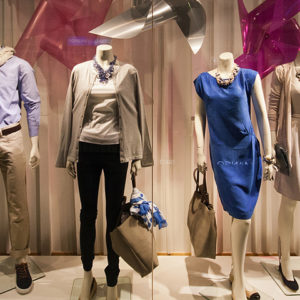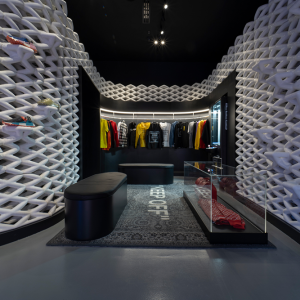

A greyscale palette of two materials – the washed granolithic plaster juxtaposed with brushed stainless steel, one is rough and dull while the other is sterile and reflective, which formed an austere monochrome space for this two-stories men-wear select shop.
In this project, Atelier tao+c boldly applied washed granolithic plaster as the main material for interior walls and floors. The material has a different name – Shanghai plaster, which has been most commonly used as exterior façade finish for the art deco buildings in Shanghai back to 1920s, a material which is granitic stones mix the cement to form a gentle and rough texture. Reusing this once-popular yet forgotten material, the architects seek to evoke memories of the most dynamic and creative era and city to convey a more “local” sense of the street. Responding to the owners’ request to feature domestic fashion brands in the space and promote local young designers.
Located in a banal shopping mall in Zhengzhou, the architect puts a lightweight inner shell made of Shanghai plaster and perforated stainless steel into the original building, enclosed a mysterious inner field. The sun shines through the perforated stainless steel, projected oblong spots onto the fine-grained ground.
The center of the ground floor is recessed by three steps to form a sunken place to loosely divide the display area and the activity area. The slab above the square was cut away to form a double-height space, and the original beams were exposed and became a cross in the opening. A staircase surrounded by Shanghai plaster passes through, the horizontal linear lighting hanging on the ceiling of the ground floor turns up and vertically across the opening which visually connects two layers.
On both floors, there is respectively a glass box as the display and installation place. The one on the ground floor breaks through the original building boundary and forms a convex window to the street. The glass corridor on the upper floor crossed over the opening.
The display items and vitrines are assembled with 5mm-thick stainless steel plates. The metal plates intersected together and avoid the welding marks. The boxy body of vitrines contrasted with the slim lines of clothing railings formed a complete and independent display system.
Interiors Designers: Atelier tao+c
Design Team: Tao Liu, Chunyan Cai, Li Xiong, Sisi
Photographs: Fangfang Tian










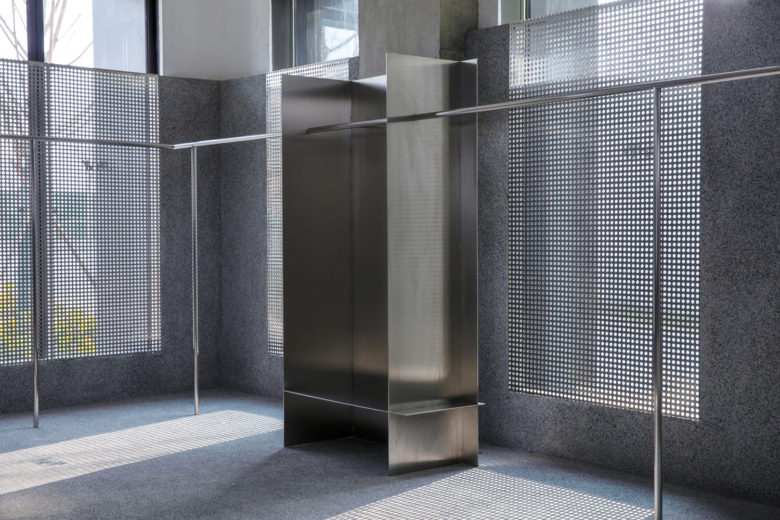
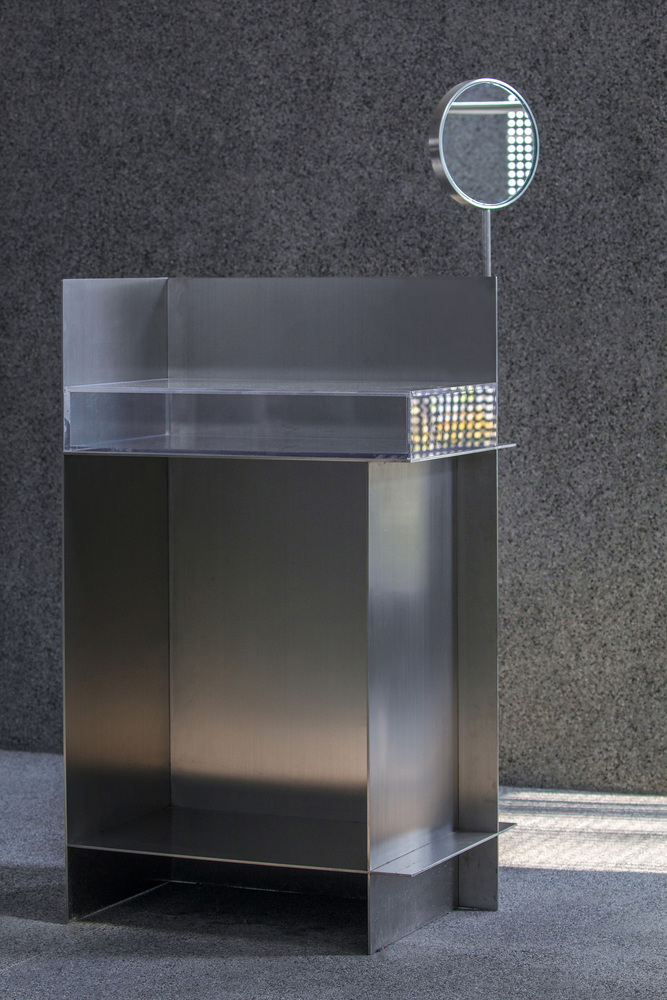









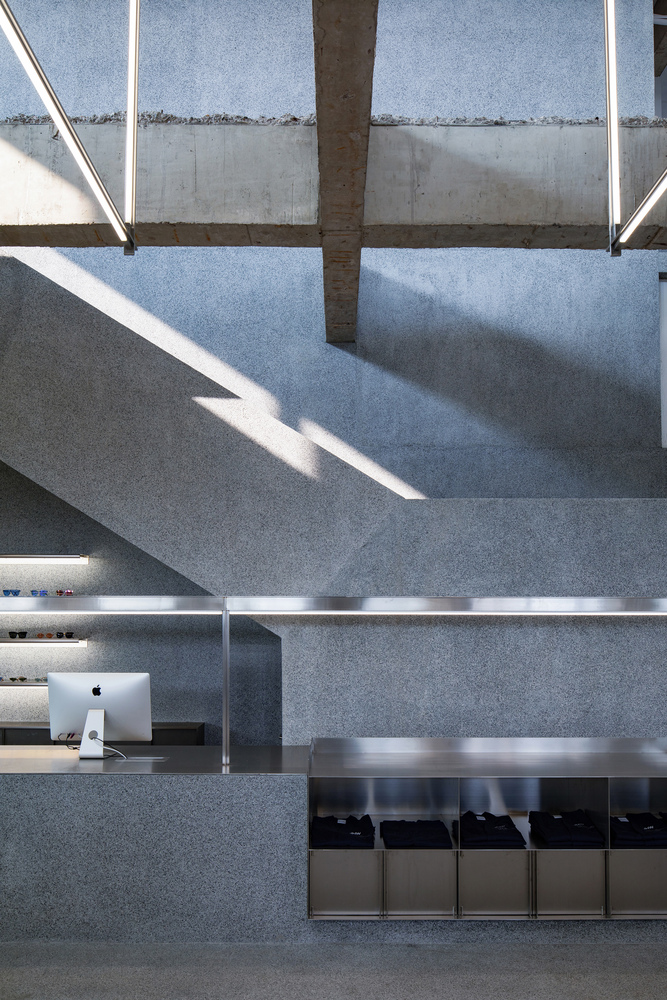


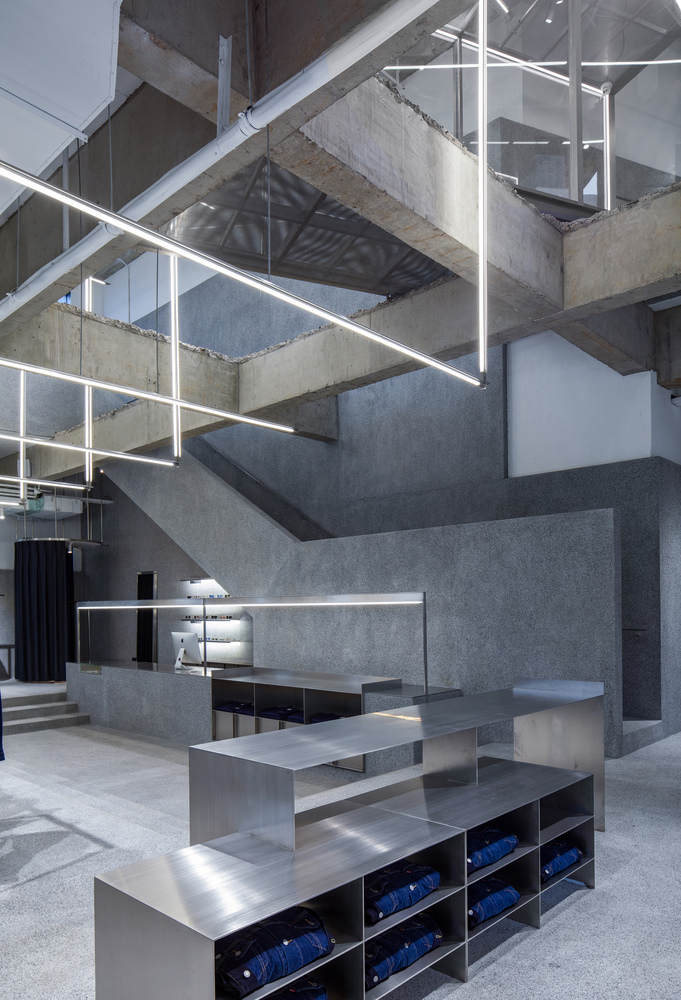


Add to collection









